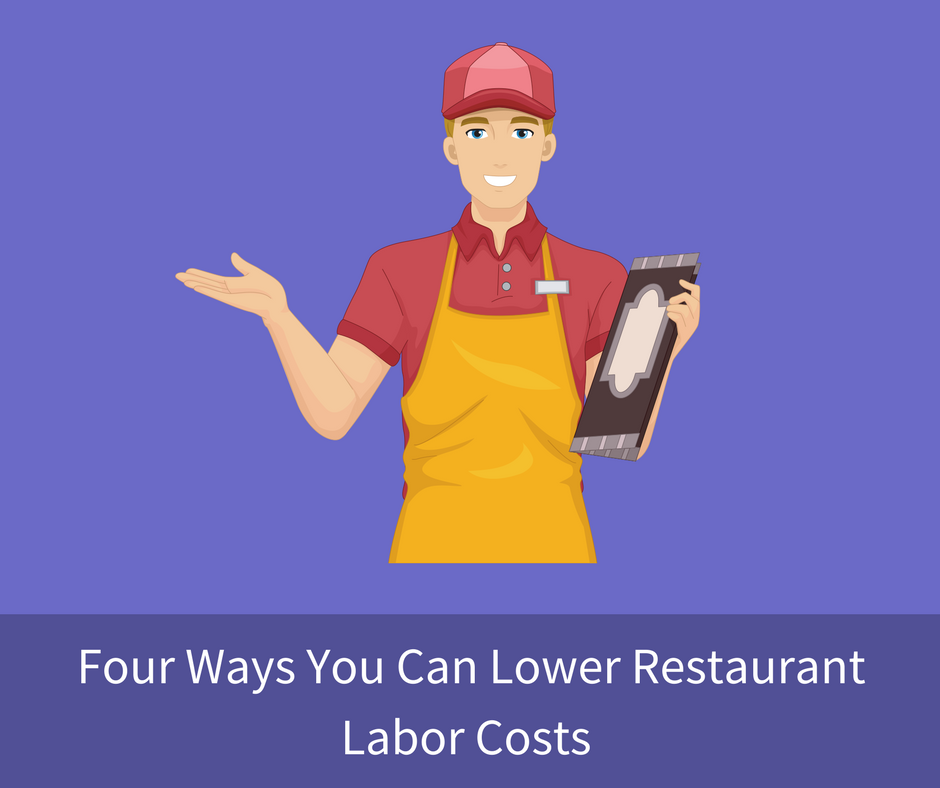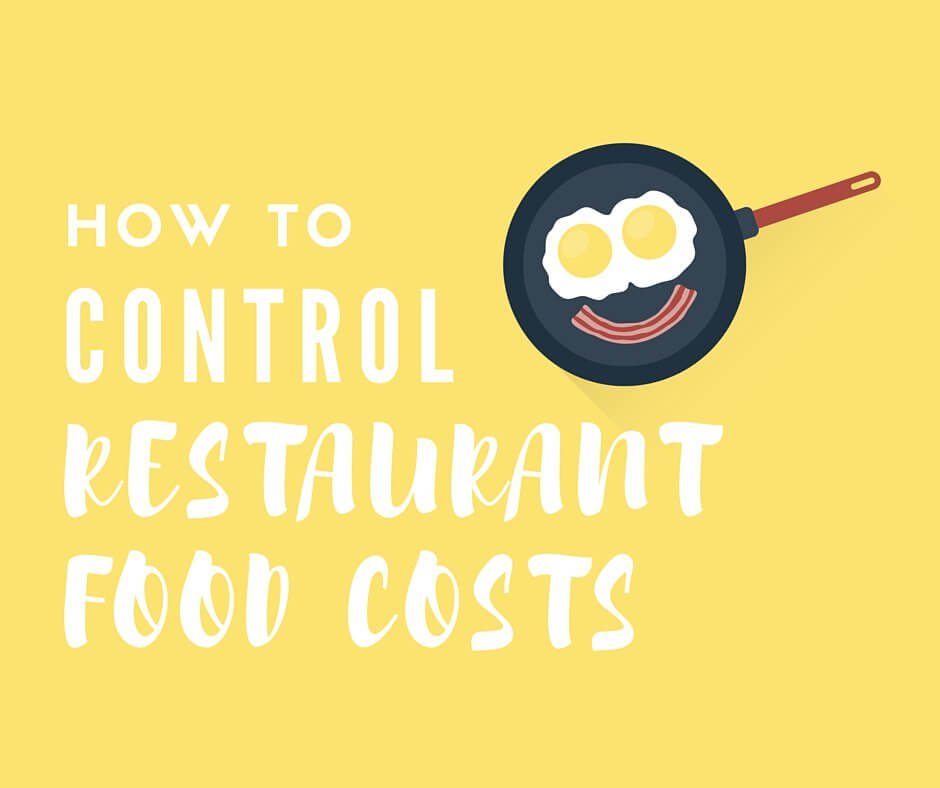How to Control Restaurant Food Costs
To attain and maintain profitability, restaurants need to generate food costs between 28 to 35% – without sacrificing quality. But it’s a difficult...

Regardless of theme, size, geographic location, or target clientele, all restaurants have one major concern in common: labor costs.
Finding the delicate balance between enough staff to cover the dinner rush and keeping your budget in check is not an easy task.
Do you hire more qualified cooks and risk the blow to your bottom line, or do you tinker with menu selection?
Do you pay your servers a better rate and offer guests the personalized service only long-term employees can provide, or do you stick with a base rate and deal with employee turnover?
Industry standards for food service labor cost should be between 20 to 25 percent of a restaurant's total sales; less than that and you’re likely sacrificing customer service, but much higher than 25% and you might have idle staff members and a blown budget.
The restaurant industry experiences a higher rate of employee turnover than other businesses in the private sector. This is largely due to the disproportionate number of teenagers (one-third of all working teenagers in the U.S. are employed in a restaurant), part-time and seasonal employees in the industry.
This high turnover rate is expensive for employers, and can actually cost restaurants $5,000 for each employee they turn over!
Here are four ways to prevent turnover and increase employee satisfaction:
Offering employees flexible scheduling to allow for personal or educational commitments can be seen as a form of compensation. Similarly, avoid split shifts or unpredictable scheduling that may prevent employees from achieving work-life balance.
While part-time employees don’t require costly benefits, they may be juggling multiple jobs or responsibilites outside of work and as a result are not fully committed to the restaurant. Hiring the right mix of full and part-time employees ensures the right balance of highly reliable and more affordable employees who can help with tasks that don't require as much expertise and commitment.
A few extra employees per shift may not seem like a major expenditure, but even minimum wage adds up quickly. In addition, too many servers on the floor means everyone takes home less tip money–which can easily deflate morale.
New or veteran employees will cost time and money when they are underperforming. By improving employee efficiency through training, you can conceivably schedule a leaner staff without sacrificing service.
Here are five ways you can build a more efficient team:
Create a detailed employee handbook and an employee training plan. It should cover everything from the initial guest greeting through dropping the check, and will make it easier to eliminate superfluous steps and evaluate individual employee performance.
Provide checklists for reference
Whether tasks require regular or irregular attention, using checklists consistently will reduce human error, improve forgetfulness, and enable employees to form good habits. Documentation of formal processes and procedures in the form of restaurant checklists also means employees will remain accountable for their responsibilities.
Cross-train your staff
Train new employees in all areas of the restaurant when they first start so they develop an understanding of how the restaurant functions as a whole–keeping back-of-house (BOH) and front-of-house (FOH) separate, of course. Not only will this increase overall functionality, but staff members will be ready to jump in and assist employees in other positions should the need arise.
Hold regular staff meetings
Holding pre-shift meetings for FOH and BOH is a great way to relay new policies, menu changes, and other top-of-mind items, leading to fewer mistakes and greater efficiency.
Conduct regular staff reviews
Evaluate your employees’ performances to identify where your team can improve individually and as a whole. Know your priorities, and provide management with a pre-determined reference to ensure that they evaluate the things that will help the team consistently deliver excellent service.
Everything and everyone in your restaurant hinges on the processes you have in place. Once you’ve established standard operating procedures, formalizing those procedures by creating restaurant checklists will help ensure those procedures are adhered to.
Here are four ways to streamline restaurant operations:
Excessively large and overly diverse menus can be difficult to execute without a similarly large number of BOH staff on duty.
Inefficient floor charts could mean restaurants are overstaffing just to cover sections that are underused.
Example: Scheduling someone in the cocktail lounge from 6-12 pm when the lounge doesn’t get busy until 10 pm. Servers could share a section until 10 pm or take on the bar or patio area as well.
Set clear guidelines as to when employees can clock in, clock out, take breaks, and do side work, and utilize a POS system that logs employee hours to help monitor staff compliance.
While a renovation may not be feasible, simple changes can lead to a reduction in the number of staff members per shift without affecting service speed or food quality. Evaluate areas of inefficiency to identify the best options.
Common ideas include:
Scheduling is arguably the most important factor influencing labor costs. While it can be difficult to minimize staffing costs while also maintaining guest expectations, smart scheduling can alleviate some of the more pressing issues.
Use these three tips to effectively schedule employees:
Don’t copy and paste your schedules! Careful planning when it comes to things like a specific event that is going to be in town or big-party and buy-out reservations that are already in the system. Incorporate on-call shifts (scheduling staff that may be “cut” or called off if guests don’t rise as expected) to ensure staff availability during peak times.
Look back to plan ahead
Forecast sales and guest counts using numbers from similar time periods the previous year (March Madness, Valentine’s Day, Fourth of July weekend) to anticipate staff needs for the current year.
Automate scheduling
Computer schedulers or “online talent management systems” make schedules mobile, allowing managers to post schedules online and employees to swap or pick up shifts via their computers or mobile phones, (with managers reserving final approval, of course), all of which prevents last-minute staff shortages and other scheduling complications.
Reaching ideal labor costs is a long-term balancing act that requires keen insight into the hiring practice, staff desires, and the needs of your restaurant. You can help achieve and maintain this balance by:
Looking for other ways to cut costs in your restaurant?
Here are some ideas for cutting restaurant energy costs.
Improve productivity and decrease costs in your restaurant.
This blog post was originally published June 02 2016, updated January 30 2018.

To attain and maintain profitability, restaurants need to generate food costs between 28 to 35% – without sacrificing quality. But it’s a difficult...

Restaurant checklists are crucial to ensuring your restaurant operates smoothly on a daily basis, but there's an additional element of measurement...

Guest Post by Saleem Khatri, Chief Executive Officer of Lavu